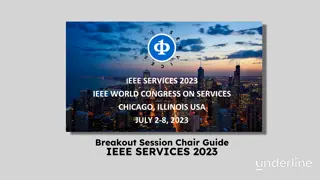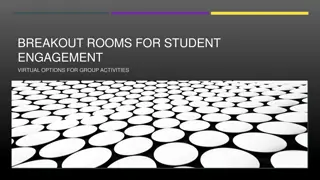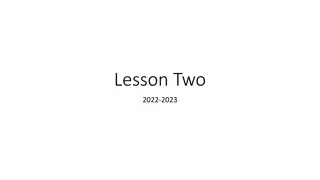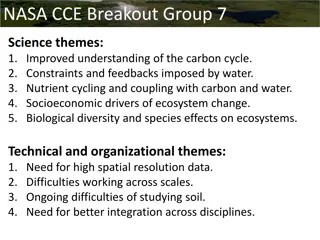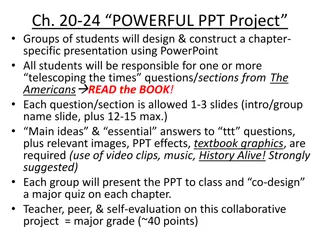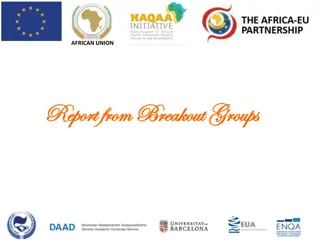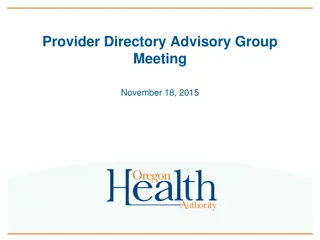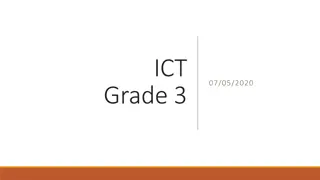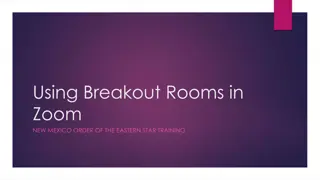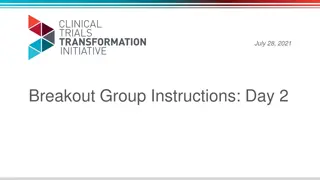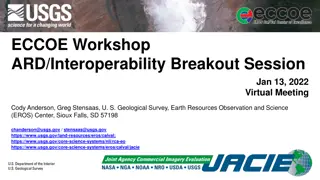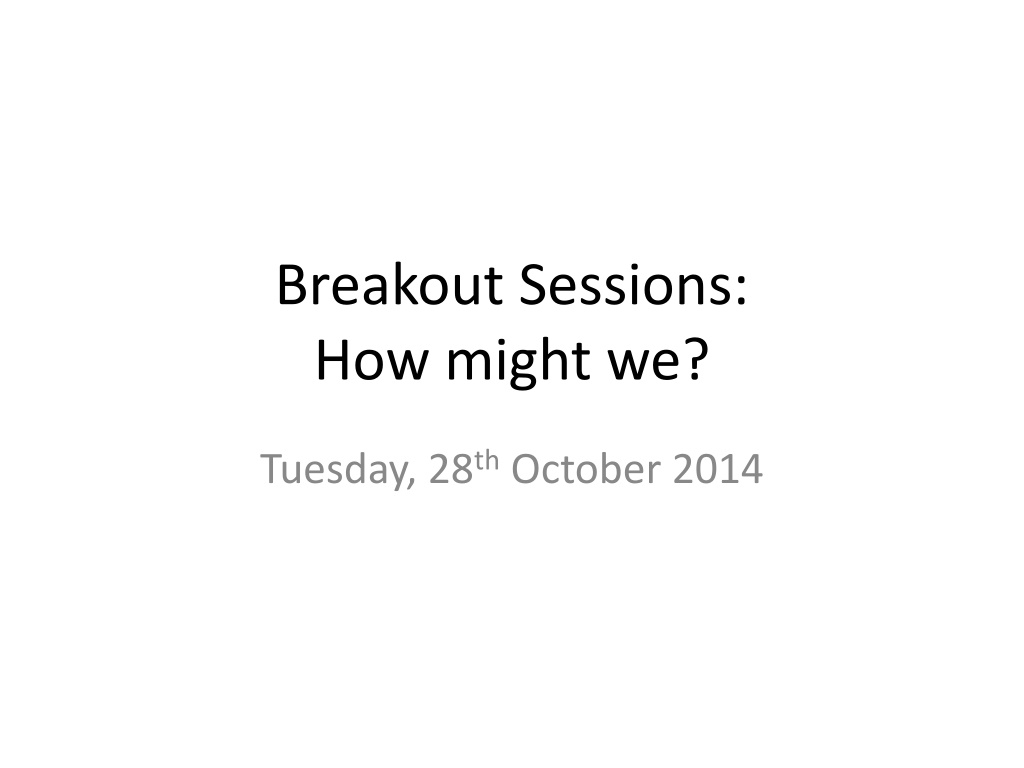
Innovating Sustainable Deforestation-Free Solutions
Exploring strategies to refine deforestation-free commitments for sustainable landscape management and benefit local forest-dependent communities. Discussions focus on integrating commitments with policies and monitoring practices, addressing misunderstandings, and aligning stakeholder expectations for effective implementation.
Download Presentation

Please find below an Image/Link to download the presentation.
The content on the website is provided AS IS for your information and personal use only. It may not be sold, licensed, or shared on other websites without obtaining consent from the author. If you encounter any issues during the download, it is possible that the publisher has removed the file from their server.
You are allowed to download the files provided on this website for personal or commercial use, subject to the condition that they are used lawfully. All files are the property of their respective owners.
The content on the website is provided AS IS for your information and personal use only. It may not be sold, licensed, or shared on other websites without obtaining consent from the author.
E N D
Presentation Transcript
Breakout Sessions: How might we? Tuesday, 28thOctober 2014
Questions 1. they achieve sustainable landscape management? How might we refine DF commitments/implementation so that 2. they benefit (not harm) local forest dependent communities? How might we frame and implement DF commitments so that 3. commitments (certification) and government policy instruments? How might we integrate DF commitments with existing voluntary 4. into effective practice at the local level? (example in West Africa, Laos) How might we translate key elements of global DF commitments 5. it be monitored and verified? How might we define unacceptable deforestation and how might
Question 1: How might we refine deforestation-free commitments/implementation so that they achieve sustainable landscape management?
Fracture Lines Potential Solutions for Discussion End Game: Sustainable land use mosaic or Zero Deforestation in global supply chains full stop Better integrate and do smart sequencing of all the assessments (i.e., HCV, HCS, etc.) e.g., across commodities, regions. Some things could be set on a global or national scale and others need to be adapted locally. Sustainable land use mosaic: Should core protected areas be fully set aside or part of the mosaic? What does sustainable land use mean? Many different visions of what sustainable is. NGOs/companies can do more to engage national or sub-national governments in forested countries on land use planning. Companies with legacy issues could present an opportunity for preventive conservation/restoration Exclusivity of focus on deforestation: What s the role of degradation? What about other ecologically important areas? Deforestation-free definition could be tiered, e.g., protected areas, on conversion, on responsible management of forests, on reforestation Some believe private sector can achieve critical threshold to achieve zero deforestation. Some don t. Corporate commitments may be varied for different parts of the supply chain. However, there s an overall need for transparency.
Question 2: How might we frame and implement deforestation-free commitments so that they benefit (or at least do not harm) local forest- dependent communities?
Tensions/Fracture Lines Misunderstanding of this simplified slogan: Zero deforestation/deforestation free = zero commitments to social economic development? Lack of understanding of how social safeguards are integrated into Zero Deforestation commitments Who internalizes the previously cheap costs of environmentally/socially responsible practices? Land tenure is ALWAYS a huge issue that needs to be solved before any talk on deforestation-free Proponents on deforestation-free commitments want instant action on commitments whereas local stakeholders want instant and tangible benefits
Solutions Deforestation initiatives need to go hand in hand with incentives Important to bring successful models to countries to understand how to untangle land tenure issues. Clear land tenure is an important consideration. Deforestation-free commitments must be based on multi- stakeholder participatory process at the local level There needs to be a way to measure and evaluate effective local stakeholder engagement, including engagement of women True costs of responsible production of raw materials should be shared along the supply chain
Question 3: How might we integrate deforestation-free commitments with existing voluntary commitments (e.g., certification) and government policy instruments?
What are the current approaches? Roundtables (biofuels, palm oil, etc.) FSC / PEFC Regulatory frameworks Lacey Act / VPA REDD+ strategies elements at different scales (national & sub-national), require arresting drivers of deforestation Commitments to Nationally Determined Contributions Deforestation commitments
Fracture Lines Cultural / social / economic differences locally and internationally Demand side northern markets Leverage of private companies over local supplier conditions Supply national economic growth Lack of enforcement / capacity limitations Enforcing national policy Imperfect legal structures / corruption Deficiencies in existing mechanisms Limited to specific commodity Standards exceptionally high e.g. Smallholders find FSC restrictive VPA / Lacey Act / FSC / PEFC limitations address supply chain rather than drivers of conversion to other uses
Fracture Lines Limitation of scope with respect to specific commitments site-specific versus issues across the landscape Access to information / data deficiencies land use planning process need to be fair / equitable, scaling up from site, landscape, jurisdictional Clarification of tenure and rights Grievance mechanisms not inclusive of all stakeholders Lack of effective trade off / negotiations
Paths Forward What are the existing approaches and how are they applied Should not be looking at deforestation commitments in isolation or as a new scheme Should engage / improve / promote existing schemes strategically (not a new scheme) Is the focus correct on deforestation or should we be rewarding better land use / efficiency of commodity production Local level negotiation balance needs of all stakeholders Mitigation avoidance, minimisation, restoration, off- setting: consider deforestation within that context??
Question 4: How might we translate key elements of global deforestation-free commitments into effective practice at the local level (e.g., in West Africa, Laos)?
Fracture Lines Whether deforestation-free entails zero tolerance vs. a more nuanced understanding, recognizing that some level of deforestation is necessary. The latter could mean some sort of de minimis exception. Using deforestation-free as a stringent target to send a message to the market vs. the practical implications and implementation questions that this would entail Framing our objective as eliminating the negative stuff (e.g. deforestation-free) vs. promoting the positive (e.g. sustainably managed), which lends itself to other landscape-level approaches
Solutions Need to understand local drivers of deforestation and whether deforestation-free goals are relevant. In cases where the driver of deforestation is industrial agricultural development, deforestation-free commitments may be impactful. Where it is not, there may need to be a different solution. On top on understanding local drivers, we need to understand the government s enforcement capacity and the available livelihood alternatives, both of which will inform the solutions available for combatting deforestation Make space for locally created solutions (which may or may not be deforestation-free commitments) that rely on objective information to enable proper accountability. Encourage and reward good practices on the ground. Deforestation-free might not be the way to do that for e.g., could shut off market access to well-managed forests. Need to frame deforestation-free commitments in such a way that they encourage sustainable land use management. E.g., Brazil has Cerrado, which is not forest but needs to be conserved. So we may need to expand the focus beyond forests.
Question 5: How might we define unacceptable deforestation and how might it be monitored and verified?
Is this the right question? Better framing: What is our goal or objective? How do we define deforestation that undermines that goal? What are the principles that should guide the implementation of deforestation-free commitments in different contexts? Then how do we monitor and verify? (a separate question) Who implements it? Who pays for it? Who is responsible? At what scale? Recognition that this should be within a broader responsible or sustainable management framework
Tensions/Fractures Small scale deforestation vs large scale Smallholders vs large-scale ag Deforestation in an agricultural commodity context vs other contexts (like forestry) A risk approach vs a verification approach to implementation and monitoring Cost vs complexity International market actors vs Government definitions Legal vs illegal deforestation Focus on main drivers of deforestation in certain regions vs a global definition and approach
Solutions Recognize that some clearing is OK as long as the principles of concern are protected Defining the broader context and the principles: HCV , HCS, peat, FPIC, ESIA, Food & Water security, legal, etc. Addressing scale through minimum patch size ; Separating different scales for tools
Monitoring/Verification Some of the challenges to think about: Certification as just one tool in the toolbox, the need for more The need to work at the large scale but recognize local solutions developed Defining independent verification De-linking companies directly paying auditors Who is appropriate to judge? Risk management approach monitoring and verification may not be necessary everywhere Ability to adapt over time and evolve the standards based on learnings and local contexts Need an open platform that provides transparency to the system without transparency we can t go to scale


